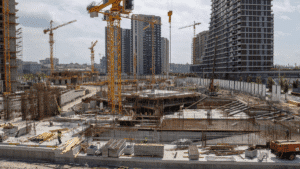Construction projects require a lot of resources. But it’s not just materials and equipment that are necessary for successful construction project completion.
More often than not, what makes or breaks a project is the construction team. Different roles require different skills, knowledge, and experience, but they’re all invaluable in construction.
Let’s see which roles and responsibilities create a good construction team.
In this article...
C-Level Executives
C-level executives in a construction company are responsible for the bigger picture.
They are the most powerful and influential people in the organization and make some of the key decisions regarding the company’s strategy and day-to-day operations.
To be a successful C-level executive (no matter the exact role), you need a strong combination of leadership, management, communication, and interpersonal skills.
Eric Anderton, who works as a coach to construction companies, says that there are three key traits construction companies need from their executives:
- An inquiring mind
- A comprehensive approach
- Emotional control
Now, the number of C-level positions and their roles varies from company to company, but generally, large companies have more C-level positions to distribute the workload evenly.
Here are some C-level executive roles you can find in a construction company:
CEO—Chief Executive Officer | They oversee all business operations, and other C-level executives report to them. They’re also responsible for the company’s success and reputation since they’re the public face of the company. |
CFO—Chief Financial Officer | They monitor the company’s financial status. Their main responsibilities involve managing long-term budgeting, risk analyses, and financial reporting. |
COO—Chief Operating Officer | Responsible for executing all business plans and strategies. They’re usually the right hand of the CEO. |
CMO—Chief Marketing Officer | Marketing strategies are their domain. So, depending on the company’s overall goals, they build and implement strategies around digital marketing, ads, events, and email campaigns. |
For each of these roles, it’s necessary they’re experts in their respective fields.
Ideally, a CMO should be knowledgeable in all things construction marketing, while a CFO will need experience and in-depth knowledge of construction finances and accounting.
Essentially, this is not a role for a newbie, and most C-level executives have at least 20 years of experience before assuming the role at the highest level of the construction company.
Architect
Architects are qualified professionals in charge of the design, planning, and supervision of construction processes.
They are responsible for creating various drawings and designs to visualize the appearance of buildings and structures before construction.
Furthermore, clients hire architects to develop a design concept that will meet their specific requirements. In comparison to other similar roles, architects are more concerned with aesthetics while keeping building regulations in mind.

But apart from bringing creativity into the construction project, here are some other responsibilities an architect has:
- Project meetings and discussions
- Cost estimations
- Contract negotiations
- Project analysis report
- Site visits
These duties also greatly influence how the final drawings and plans will be executed.
Architects can’t create effective construction drawings and concepts without extensive knowledge of building codes, regulations, modeling software, and construction techniques.
To put it briefly, architects are some of the key people in the construction team who are responsible for bringing the client’s vision to life, by way of construction plans and technical documents.
Structural Engineer
Once architects are finished with the project’s design, it’s the job of the structural engineer to ensure buildings remain strong and safe.
They are responsible for any structural failure, so they have to supervise the material selection, structural integrity, and field workers’ performance.
That’s why they don’t just sit in the office making designs and calculations. They also need to visit sites and ensure their plans are being implemented correctly.
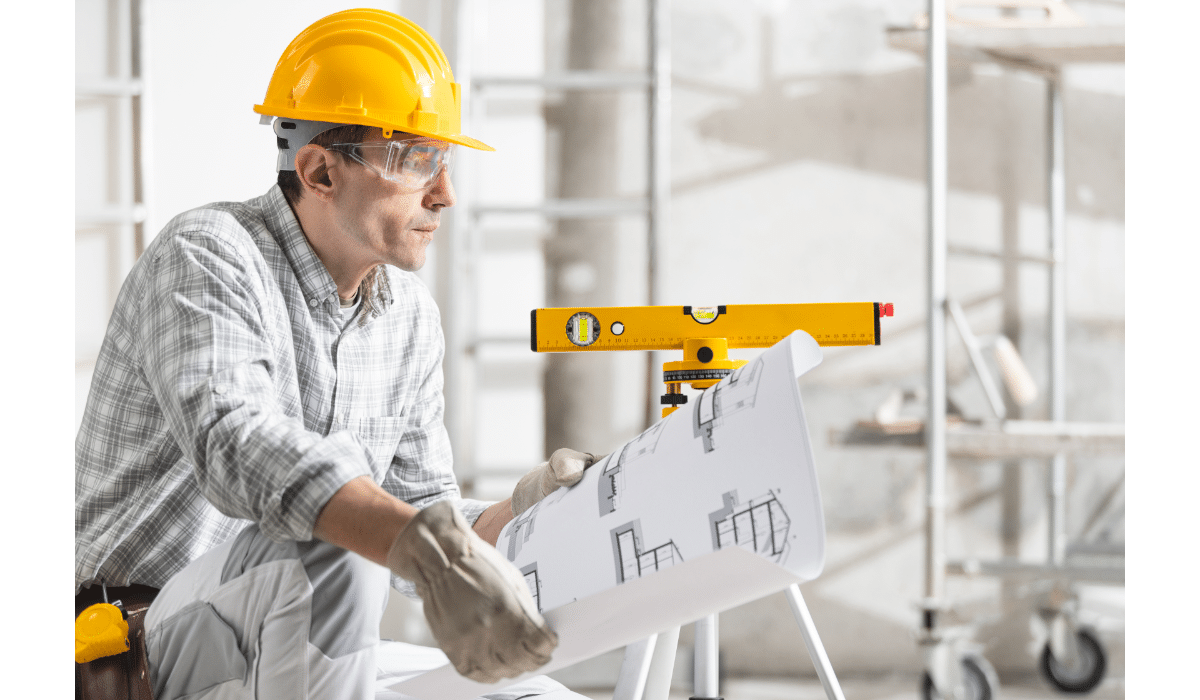
Because of this, you can find structural engineers on various construction sites, from residential projects and hospitals to bridges and offshore rigs.
They need to use their knowledge to create safe, solid, and durable structures in every construction industry sector.

Diego Philipps says that being a structural engineer is incredibly rewarding.
The main part is solving problems creatively and efficiently, but most importantly, it’s doing everything as a part of a team.
According to him, to build spaces for people to live and work, you need to listen to the team and find the right problem to solve.
Furthermore, a professional structural engineer is trained to use mathematical and engineering concepts to solve highly complex design structures.
Also, they need to use the same calculations to predict how the building will act throughout its lifespan.
All in all, any construction team can greatly benefit from the input and expertise of a structural engineer to create safe and sound buildings.
Designer
A designer in construction is anyone who prepares or modifies designs for construction projects.
Designs typically include sketching building plans, specifications, drawings, and other relevant documentation.
Now, at first glance, the responsibilities of a designer are similar to that of an architect.
In both roles, they create designs for structures before construction, examine building codes and project requirements, and communicate with clients.
The main difference is that anyone can assume the role of a designer, while only registered and trained individuals can call themselves architects.
Basically, every architect can be a designer, but not all designers are architects.

But while they don’t necessarily need certification, designers need extensive knowledge and experience concerning building codes and regulations, construction industry standards, and technologies required to perform their job correctly.
They use this to turn clients’ ideas into working structure drafts. Designers should also be flexible enough to alter their plans according to the client’s needs.
Keep in mind that the designer’s main responsibility is to ensure their advice and plans result in a solid structure compliant with the building code.
Construction Project Manager
A project manager is in charge of overseeing a construction project from start to finish.
They plan, schedule, and monitor every aspect of a construction project to ensure it is completed on time and within budget.
The scope of the project manager’s responsibilities is large because they need to be involved in every aspect of the construction project, excluding the construction work itself.
Here are some of their duties:
- Drawing detailed project schedule, budget, and resources
- Establish project goals and objectives
- Selecting and hiring a project team
- Negotiating with contractors and suppliers
- Resolving issues or delays
- Communication with employees and clients
- Writing bids for tender
- Reporting to clients on project’s progress
Ken Wicks is a project manager, and he believes that the most challenging part of his job is matching the product that the client wants with the budget they have.
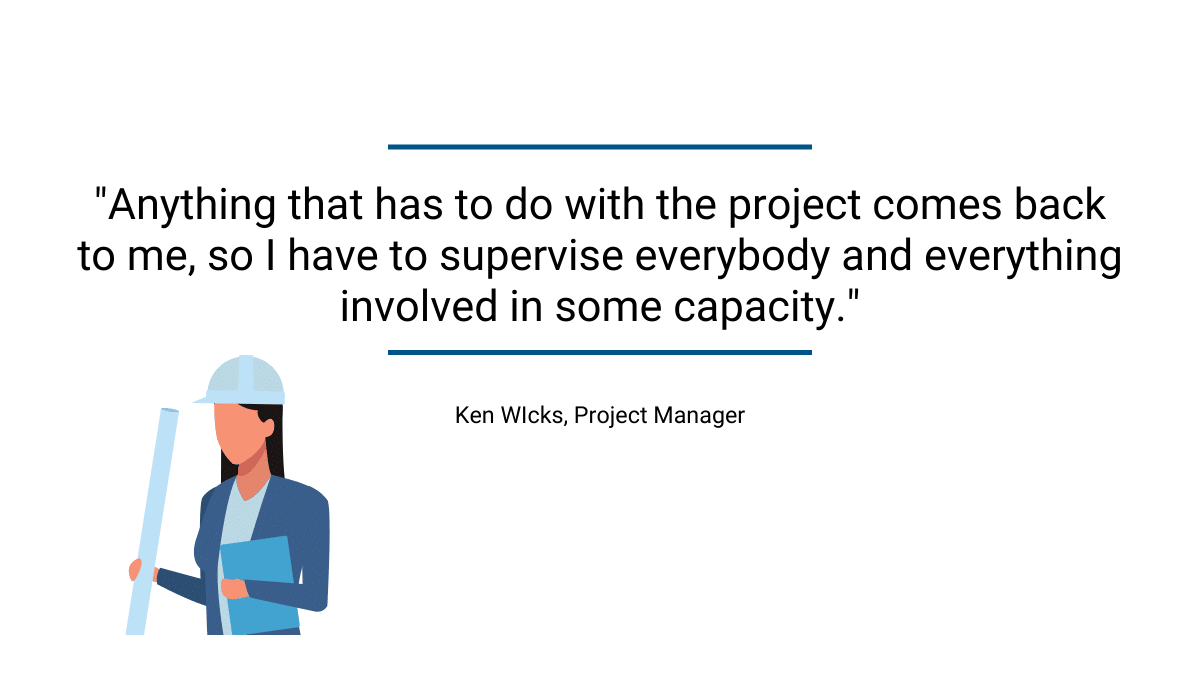
He also adds that if you’re a detail-oriented person, good at solving problems on the fly, can orchestrate people, and handle surprises that come up regularly, you have what it takes to become a successful project manager.
Since project managers oversee every phase of the construction project, they’re invaluable to any construction team.
Construction Superintendent
Every superhero needs a sidekick, so project managers have superintendents.
In general, they have overlapping responsibilities: managing and overseeing construction projects and ensuring safety, schedule compliance, and budget control.
But while project managers mostly operate from the office, superintendents are usually seen on the job site.
Superintendents develop a schedule, oversee the workers’ performance, and manage communication and information from the office to the field.
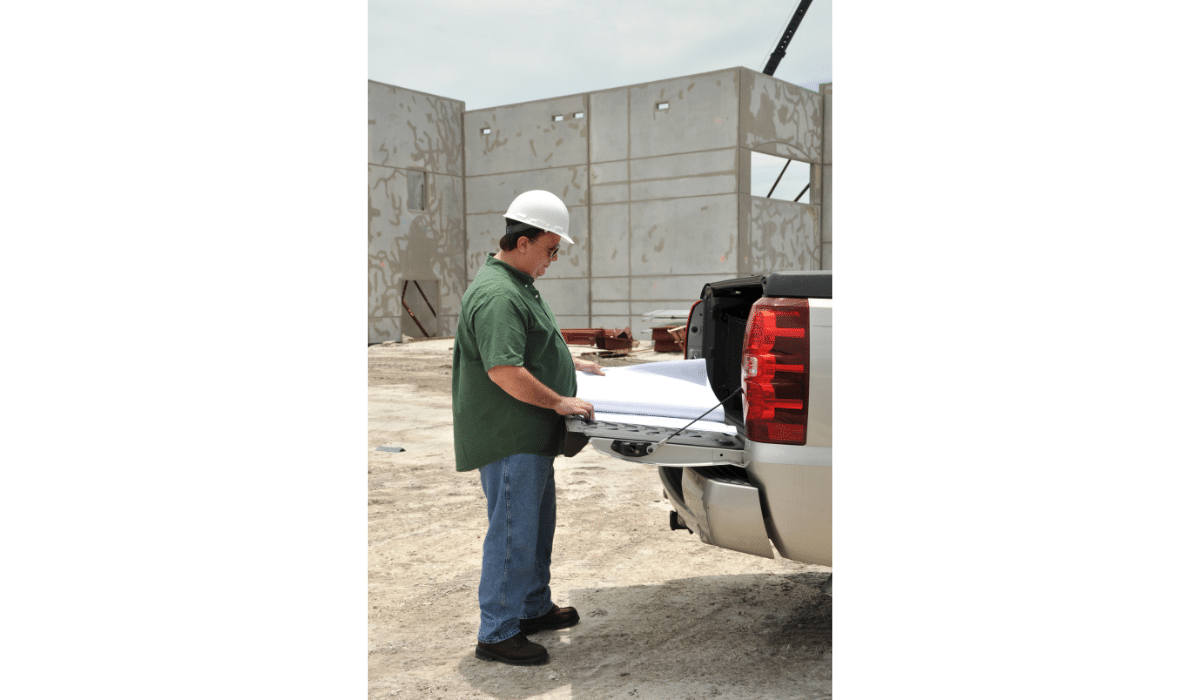
Or in other words, superintendents are mediators between the office and the field and ensure all plans and ideas from the office are built properly.
While they work alongside construction workers, superintendents are primarily concerned with monitoring project quality, while worker management is the domain of a general foreman.
To become a superintendent, you need at least 10 years of experience, in addition to great communication and time management skills.
A good superintendent is analytical, an excellent problem-solver, and good at handling pressure.
General Foreman
In some construction companies, you’ll see that the roles of a superintendent and general foreman are fused into one. So, it’s not uncommon that these titles are used interchangeably.
Yet, there are slight differences you need to keep in mind.
General Foreman is in charge of the day-to-day operations on the construction site. They are directly involved with the performance and oversee the entire construction workforce.
This means they need to wear a lot of different hats.
Here is what numerous general foremen had to say about their job at Wright Service Corp, an environmental services company.
First, becoming a safety instructor is one of the most important tasks as a general foreman.
This means they must have safety discussions with workers, ensure everyone has the appropriate safety gear, and follow safety procedures.
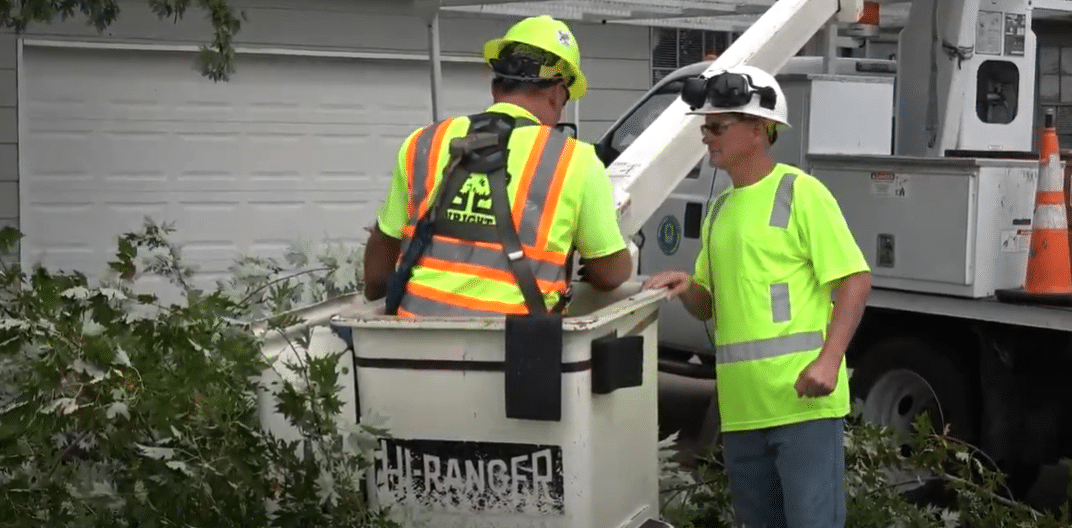
Then, the general foreman also acts as a hiring agent and educator. They’re responsible for interviewing and evaluating potential new employees and later training them.
Another important aspect of the job is being a leader and a counselor.
Basically, they’ll have to establish a good working culture and maintain the crew’s morale, which also includes having disciplinary talks with people and informing them about the company’s expectations.
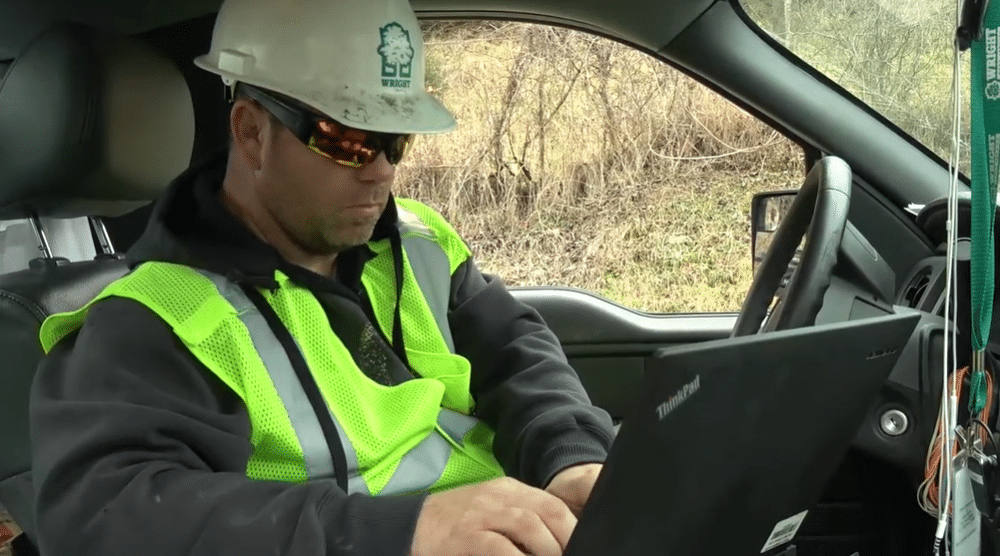
One general foreman also adds that he didn’t expect to have so many administrative tasks.
More precisely, he’s in charge of the crew’s time sheets and filling out paperwork, among other things.
But they all agree on one thing: as a general foreman, you’re the “eyes and ears” on the ground for the company.
You need to establish priorities because everything you do affects the company and the workforce.
Site Clerk
Site clerk (also known as field engineer) is an entry-level position, ideal for recent graduates who want first-hand experience in the construction industry.
They work alongside the general foreman or superintendent and act as their assistants on the construction site.
Now, while technical skill in construction is not necessary for this role, to successfully carry out their duties, site clerks need a good understanding of all aspects of construction.
They need to keep the whole project’s picture in mind while working on details daily.
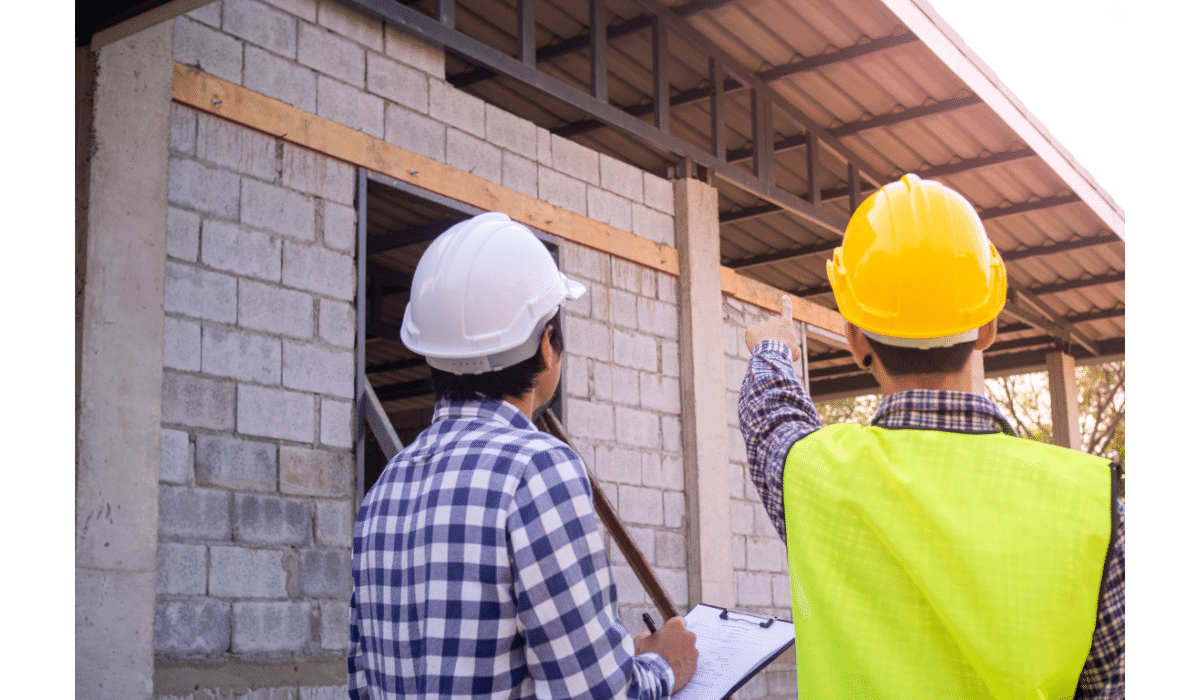
The scope of work is different, depending on the individual’s background and the company’s policies, but in general, here’s what’s expected from a site clerk:
- Organizing and maintaining construction documents
- Inspecting construction work
- Quality checking procured materials
- Monitoring progress and reporting to senior management and clients
- Keeping detailed records of work
- Identifying defects
- Checking building regulations, health and safety protocols, and legal requirements
- Being computer-literate and competently using construction software for numerous tasks
Additionally, for many visitors to the site, site clerks are usually the first point of contact so utmost professionalism is mandatory.
In a nutshell, for anyone wanting a career in construction, becoming a site clerk is the first step.
Trade Foreman
You might be wondering what the difference between a general foreman and a trade foreman is?
Essentially, they do the same thing—supervise the construction workforce.
Yet, the main distinction is that the general foreman oversees the entire crew, while trade foremen are only responsible for their trade workers.
So, on one construction site, you can have one general foreman but multiple trade foremen. For example, an electric foreman, a carpentry foreman, or a concrete foreman.

Trade foremen are experienced workers in their specific field, but they organize other workers, ensure they have the right tools and machinery, coordinate tasks and activities, and train employees.
This ensures that the specific task is performed correctly and with the right quality.
Trade foremen also need to inspect the work and control the overall job.

Since they’re involved with the details of the project, a good trade foreman needs to work well under pressure to meet deadlines and budget constraints, have good communication skills, and have the ability to build relationships with different professionals on site.
A certainly valuable aspect of the job is that trade foremen serve as mentors to new employees.
Since they’re masters of their trade, less experienced workers can look to them for advice, guidance, and best practices to advance in their role.
Being a trade foreman comes with many responsibilities, but it’s also a highly-rewarding job.
Conclusion
To keep a construction project going, you need an experienced and motivated construction team.
No matter their field of expertise, their input is necessary to create projects on time and within budget.
What you can learn from this is that each member of your construction team is invaluable and that successful task delegation can mean the difference between project success and failure.
When everyone knows their role and responsibilities, completing a construction project according to plans is easier.



